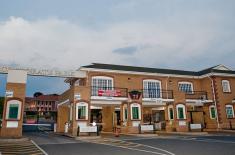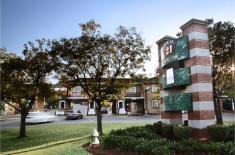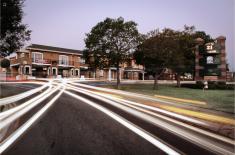Smart Stores Unite Online And Offline For Omni-Channel Success
Route 21 Business Directory


12 Victoria Link
Route 21 Corporate Park
Irene Ext. 31, Centurion
Office: 012 345 55 55
property@divisions.co.za
www.abacusdivisions.co.za
Route 21 Corporate Park - Abacus Divisions Feed
Route 21 Corporate Park Official Feed
Corporate & Business Properties For Sale & To Let
By Minesh Manga, director at XON Retail Solutions
The growing prominence of smart stores in support of omni-channel retail is due to changing behaviours of shoppers. Technology has progressed in the past 25 years and has changed the way consumers interact with brands and products. In the past 25 years traditional scenarios included limited consumer exposure to brands and products, typically localised to in-store experiences with a higher likelihood of a consumer purchase. Consumers were influenced by TV advertising and in-store marketing that resulted in fierce brand loyalty or lengthy – and expensive – campaigns to change consumer preferences.
Today’s consumers could not be more different. They use the Internet, primarily on their mobile smartphones with social media channels, to help them make buying decisions – primarily relying on endorsements from other consumers – and they are more selective, ensuring that products or services more precisely match their needs. These consumers are robustly individualistic, they are involved, they are independent, and well informed.
Minesh Manga - Director at XON Retail Solutions
This change has blurred the lines between online and offline shopping. According to a study by Interone called: The Retail Revolution, 44% of people research products or services online before they buy – which is where we get the verb: Googling. 51% of people research products online then visit a store to buy it. 32% research it online, go to the store to see it then end up buying it online later. Only 17% visit the store first then buy a product online. Food remains one of the top categories that sees consumers still predominantly buy offline, with home improvement products a fairly close second. There is, however, in all categories except food, a strong propensity to buy based on a hybrid pattern of online and offline purchasing.
However, we will see an increase in online food and grocery buying with new concepts like Click & Collect whereby customers select products using the retailer’s website then collect at conveniently located stores. A clear omni-channel strategy is required and executed by retailers to overcome the challenges when these type of new concepts are being rolled out. They align critical functions such as matching the advertised online price to those in stores. They ensure stock is available at the customer’s store of choice. They ensure that stock picking occurs in time for customer collections, that invoicing is prepared and payment made on collection by customers, and that customers have a seamless and happy experience from the time they first go online to the time they leave the store with their products.
Food shopping is characteristically routine or subject to spontaneous decisions – and the spontaneous opportunity is largely lost to retailers. Centrally controlled digital signage could present appropriate content using in-store TVs – that generate advertising revenue – and offer recipe suggestions, for example. The lesson is that retailers embrace digital technology to drive in-store sales as part of the customer experience rather than pushing transactions.
Aligning both online and offline channels, in an omni-channel approach, is crucial to maintaining retailer brands. People enjoy the convenience of online research and shopping, whenever they choose to buy, with the ease of delivery to their addresses, based on the opinions of others who have used the products, and to which there is a history that presents brand and product perceptions over a period of time.
Omni-channel is achieved by employing big data, cloud services and social media channels linked to mobile smartphones in consumers’ hands, indoor positioning technologies and digital directing technologies like SmartFlash. Combining these elements leads people from their computers or phones into stores where they can continue the connection and experience while being led directly to the products that interest them. Once at the shelf they can glean additional information and learn more from in-store assistants.
Navigating stores quickly in our increasingly time-sensitive world is enormously beneficial to consumers who may already have searched for a product – or will do so as they arrive in-store – get a dynamic or real time route as they enter the store and learn the optimal path to the product’s location. Help is never far away in a digitised world when consumers can click an in-app help button that sends the request to the nearest or most appropriate assistant – who is automatically routed to that customer or vice versa.
These smart store consumer experience applications of digital technology are what Forrester alludes to when it suggests retailers could improve engagement, conversion and in-store sales by uniting the online and offline worlds to deliver the omni-channel experience.
About XON Systems
XON established in 1996, designs, builds, operates, and manages information and communication technology (ICT) solutions created specifically for customers. We are a level 2 BBBEE business that embraces social responsibility and upliftment.
For more information, visit www.xon.co.za
Media enquiries: Minesh Manga, XON
Contact details: 011 237 4500, minesh@xon.co.za












